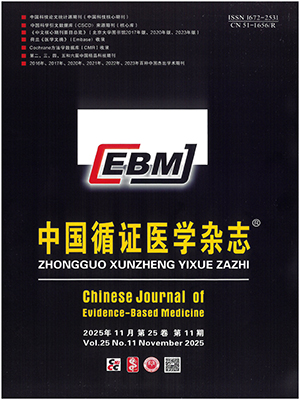| 1. |
Lackland DT, Roccella EJ, Deutsch AF, et al. Factors influencing the decline in stroke mortality: a statement from the American Heart Association/American Stroke Association. Stroke, 2014, 45(1): 315-353.
|
| 2. |
《中國腦卒中防治報告 2018》編寫組. 我國腦卒中防治仍面臨巨大挑戰—《中國腦卒中防治報告 2018》概要. 中國循環雜志, 2019, 34(2): 105-119.
|
| 3. |
黃長琴, 鐘艷. 腦卒中幸存者運動功能障礙康復治療新進展. 檢驗醫學與臨床, 2017, 14(3): 449-451.
|
| 4. |
王隴德, 王金環, 彭斌, 等. 《中國腦卒中防治報告 2016》概要. 中國腦血管病雜志, 2017, 14(4): 217-224.
|
| 5. |
Winstein CJ, Stein J, Arena R, et al. Guidelines for adult stroke rehabilitation and recovery: a guideline for healthcare professionals from the American Heart Association/American Stroke Association. Stroke, 2016, 47(6): e98-100.
|
| 6. |
Hebert D, Lindsay MP, McIntyre A, et al. Canadian stroke best practice recommendations: Stroke rehabilitation practice guidelines, update 2015. Int J Stroke, 2016, 11(4): 459-484.
|
| 7. |
衛丹丹. 太原市腦卒中家庭照顧者健康狀況及社區護理需要的研究. 太原: 山西醫科大學, 2012.
|
| 8. |
楊芷, 童曉飛. 顱腦損傷幸存者家庭遠程康復護理的研究進展. 護理學雜志, 2018, 33(2): 102-105.
|
| 9. |
Demiris G, Shigaki CL, Schopp LH. An evaluation framework for a rural home-based telerehabilitation network. J Med Syst, 2005, 29(6): 595-603.
|
| 10. |
Nijenhuis SM, Prange-Lasonder GB, Stienen AH, et al. Effects of training with a passive hand orthosis and games at home in chronic stroke: a pilot randomised controlled trial. Clin Rehabil, 2017, 31(2): 207-216.
|
| 11. |
Chen J, Jin W, Dong WS, et al. Effects of home-based telesupervising rehabilitation on physical function for stroke survivors with hemiplegia: a randomized controlled trial. Am J Phys Med Rehabil, 2017, 96(3): 152-160.
|
| 12. |
高修明, 夏媛, 郭琳, 等. 基于視頻互動的遠程康復模式對腦卒中偏癱幸存者療效的研究. 中國繼續醫學教育, 2017, 9(22): 211-213.
|
| 13. |
Chaiyawat P, Kulkantrakorn K. Effectiveness of home rehabilitation program for ischemic stroke upon disability and quality of life: a randomized controlled trial. Clin Neurol Neurosurg, 2012, 114(7): 866-870.
|
| 14. |
Blacquiere D, Linsay MP, Foley N. Canadian stroke best practice recommendations: telestroke best practice guidelines update 2017. Int J Stroke, 2017, 12(8): 886-895.
|
| 15. |
Higgins JPT, Green S. Cochrane handbook for systematic reviews of interventions (Version 5.1.0). The Cochrane Collaboration, 2011. Available at: http://www.cochrane-handbook.org.
|
| 16. |
Redzuan NS, Engkasan JP, Mazlan M, et al. Effectiveness of a video-based therapy program at home after acute stroke: a randomized controlled trial. Arch Phys Med Rehabil, 2012, 93(12): 2177-2183.
|
| 17. |
王菲. 腦卒中患者遠程視頻家庭康復指導與常規家庭康復指導效果對比研究. 山西醫藥雜志, 2018, 47(13): 1553-1554.
|
| 18. |
Adie K, Schofield C, Berrow M, et al. Does the use of Nintendo. Wii Sports Clin Rehabil, 2017, 31(2): 173-185.
|
| 19. |
Huijgen BC, Vollenbroek-Hutten MM, Zampolini M, et al. Feasibility of a home-based telerehabilitation system compared to usual care: arm/hand function in patients with stroke, traumatic brain injury and multiple sclerosis. J Telemed Telecare, 2008, 14(5): 249-256.
|
| 20. |
金燕, 陳靜, 李煜珍, 等. 遠程康復護理干預對急性腦卒中偏癱幸存者日常生活能力及照顧者壓力指數的影響. 護理研究, 2016, 30(2): 202-204.
|
| 21. |
Han SY, Kim DI, Kim JH, et al. Effect of telerehabilitation using mobile phone on motor function recovery in chronic stroke patients. KJOT, 2012, 20(3): 67-79.
|
| 22. |
Wolf SL, Sahu K, Bay RC, et al. The HAAPI (home arm assistance progression initiative) trial: a novel robotics delivery approach in stroke rehabilitation. Neurorehabil Neural Repair, 2015, 29(10): 958-968.
|
| 23. |
金巍, 時芳芳, 董文帥, 等. 遠程卒中醫療的研究進展和應用現狀. 國際腦血管病雜志, 2015, 23(2): 111-115.
|
| 24. |
佚名. 國家遠程卒中中心在宣武醫院揭牌. 中國醫療設備, 2014, 29(6): 180.
|
| 25. |
Chen Y, Abel KT, Janecek JT, et al. Home-based technologies for stroke rehabilitation: A systematic review. Int J Med Inform, 2019, 123: 11-22.
|
| 26. |
Josman N, Kizony R, Hof E, et al. Using the virtual action planning-supermarket for evaluating executive functions in people with stroke. J Stroke Cerebrovasc Dis, 2014, 23(5): 879-887.
|
| 27. |
Piron L, Turolla A, Agostini M, et al. Exercises for paretic upper limb after stroke: a combined virtual-reality and telemedicine approach. J Rehabil Med, 2009, 41(12): 1016-1102.
|
| 28. |
Cikajlo I, Rudolf M, Goljar N, et al. Telerehabilitation using virtual reality task can improve balance in patients with stroke. Disabil Rehabil, 2012, 34(1): 13-18.
|
| 29. |
S?rensen T, Dyb K, Rygh E, et al. A qualitative description of telemedicine for acute stroke care in Norway: technology is not the issue. BMC Health Serv Res, 2014, 14(1): 643.
|
| 30. |
Cherry CO, Chumbler NR, Richards K, et al. Expanding stroke telerehabilitation services to rural veterans: a qualitative study on patient experiences using the robotic stroke therapy delivery and monitoring system program. Disabil Rehabil Assist Technol, 2017, 12(1): 21-27.
|
| 31. |
Saywell N, Taylor D. Focus group insights assist trial design for stroke telerehabilitation: a qualitative study. Physiother Theory Pract, 2015, 31(3): 160-165.
|




